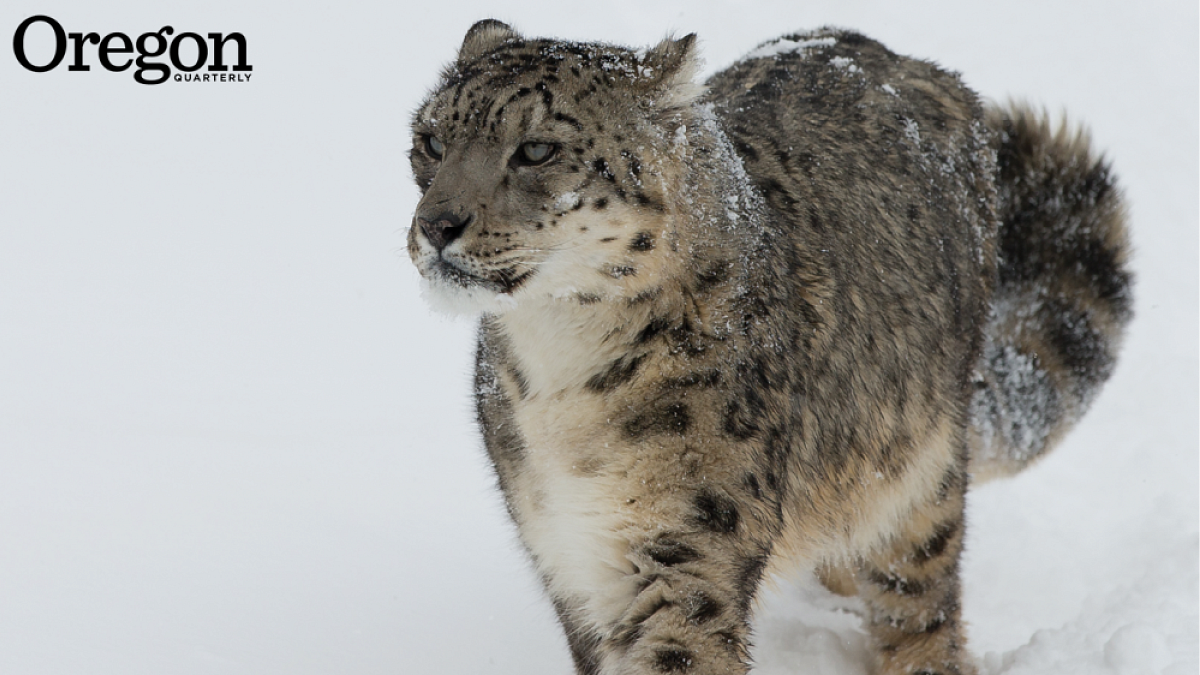Most of the world’s remaining snow leopards can be found high on the Tibetan Plateau, roaming the rugged landscape nestled between towering peaks and gushing rivers. But these mountain-dwelling felines are rapidly dwindling in numbers due to poaching, declining amounts of prey, retaliatory killings from local ranchers, climate change, and increased human activity on their habitat.
Conservationists are trying to protect this vulnerable species, but they’re bumping up against challenges—especially in Tibet, where the rough and remote terrain makes it difficult to collect data and monitor the roaming animals. And where local communities have needs that clash with conservation efforts, like ranchers who want to safeguard their livestock from the carnivorous cats.
Hannah Taub was digging into the nuances of these challenges for a research project earlier this year when she identified an unconventional resource for conservation efforts: Tibetan monks.
Her project was for Biology and Geology of the Tibetan Plateau, offered through the Robert D. Clark Honors College. She’d been charged with researching a topic for her final paper and decided to focus on snow leopard conservation; she wanted to investigate how humans can better protect the endangered cats, which have been on the threatened species list since 1972.
Samantha Hopkins, an associate professor of geology, had encouraged her students to pursue issues that aren’t fully resolved so they could offer their own insights into solutions. Given the long list of conservation challenges for the snow leopard, there was no question that Taub’s research subject offered plenty of room for her to identify a new approach.
Which is exactly what she did, by turning to Tibetan monks and spirituality.
The seeds of this idea were planted when she unearthed information about the Dalai Lama’s efforts to merge science and spirituality. This concept immediately resonated with Taub, an environmental studies major. She’d spent four years at the UO honing her ability to draw from disciplines associated with the humanities, such as religion, to advance environmental problem-solving.
Hopkins started to dig into the values of Tibetan monks, and quickly discovered that they’re a natural fit for aiding with snow leopard conservation.
“The spiritual traditions and practices of Tibetan Buddhists and indigenous communities emphasize respect for animal life, and specifically snow leopards,” she writes in her paper. “Their spiritual values align closely with conservation principles, positing these communities as valuable, underutilized resources in the effort to protect snow leopards in and around the Tibetan Plateau.”
But it isn’t simply their values that position them to be such assets in snow leopard conservation. Tibetan monks are also often ideally situated, both physically and within their communities, to help address some of the biggest challenges facing conservationists, Taub says.
“Monasteries are often in some of the most isolated and unpopulated areas of Tibet,” says Taub, pointing out the overlap between areas where monks dwell and snow leopards roam. “Monks could play a unique role in species observation of the elusive snow leopards.”
Through her research, she discovered that Tibetan monks have already aided conservationists in similar data collection, when they helped estimate the size of the regional blue sheep population. It’s possible the monks were tapped for this work because they are trusted figures on the Tibetan Plateau, and locals are more likely to cooperate with the monks than they are with foreign researchers, Taub says.
The respect that the monks enjoy within their communities is the final pillar of Taub’s argument to better utilize them in the fight to protect snow leopards. Taub believes monks could help local groups better understand the need to protect snow leopards by inserting spirituality into conversations about conservation.
“Coercive pressures from the government and environmental rhetoric from nongovernmental organizations aren’t effective. Locals respect and follow the teachings of the monks. They could be more easily convinced to protect nature and wildlife if they understood the spiritual connection,” Taub says.
Scientists studying snow leopards in Tibet have expressed concerns that this friction between people and the ecology of the Tibetan Plateau is hampering their efforts. Conservation policy is most successful when it has the support of local community members, organizations, and stakeholders.
“Incorporating the traditional, local reverence for snow leopards with scientific approaches would create a more successful and culturally-sensitive method of conservation,” says Taub, who graduated earlier this year.
Hopkins was thrilled with the innovative and interdisciplinary angle for Taub’s project.
“This course is intended to train students in interdisciplinary approaches in spite of the mostly scientific slant to the content, and Hannah did a great job of taking the perspective she had from her own interests in environmental studies to reexamine science and humanities in tandem,” Hopkins says.
“Her proposal that an understanding of the local religious structures could further snow leopard conservation represents the kind of integrative thinking that a liberal-arts education is intended to encourage in students.”
—By Emily Halnon, University Communications


